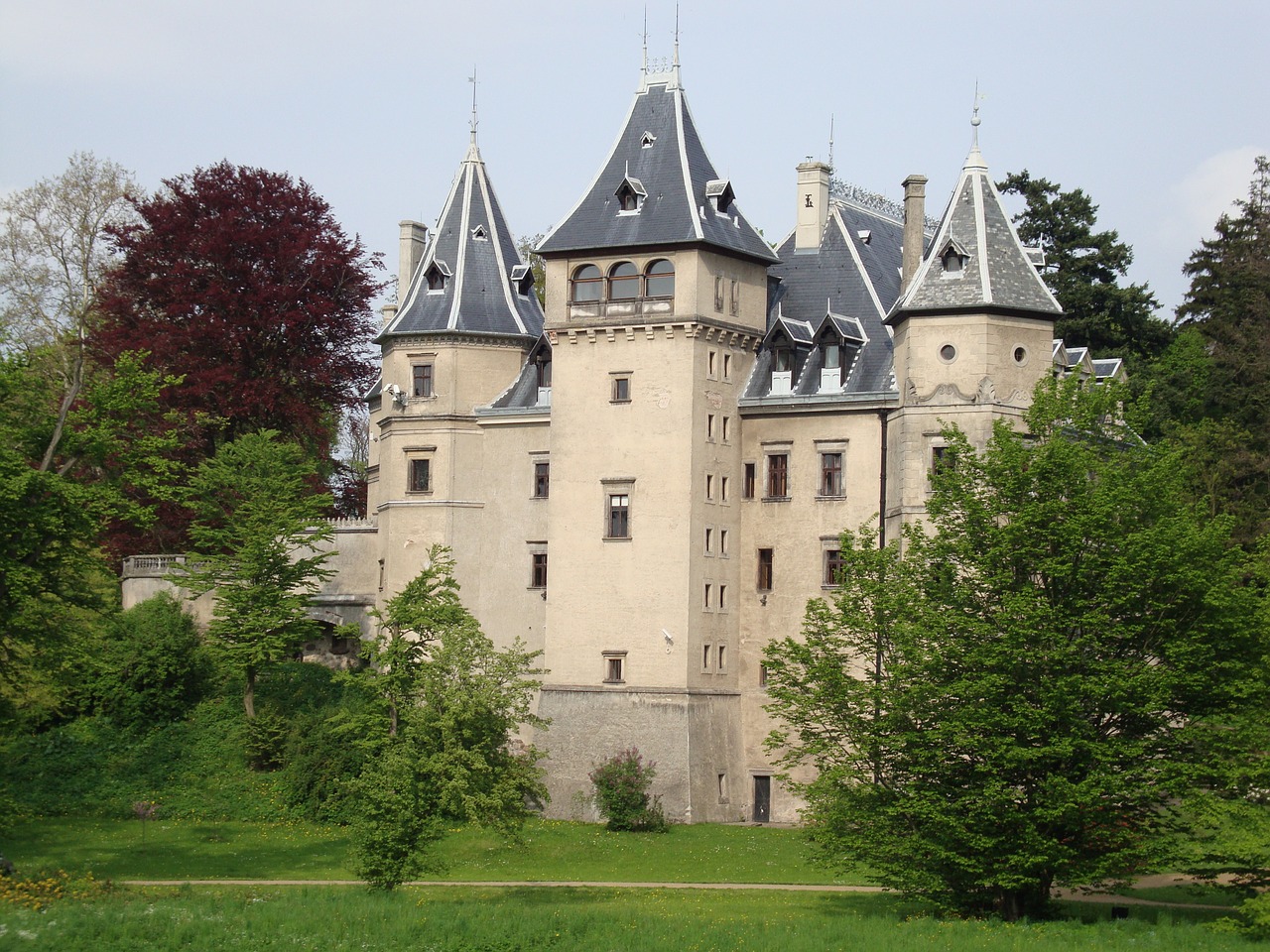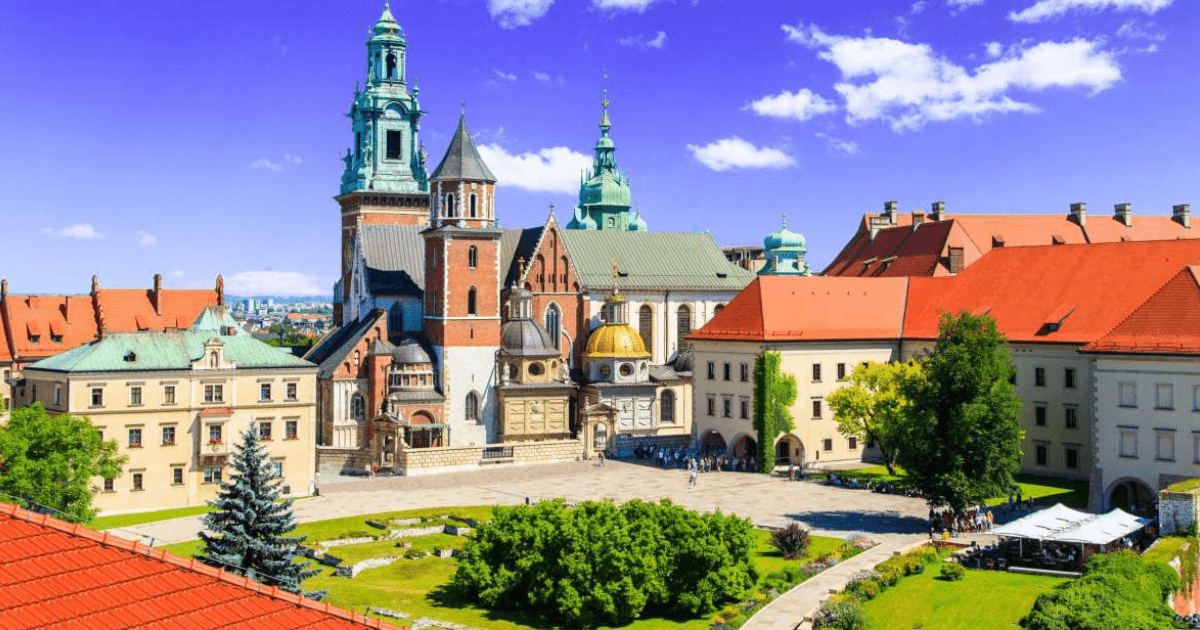Nowy Wisnicz Castle Poland
What attracts crowds of tourists in Nowy Wiśnicz is undoubtedly an impressive castle, rising on a forested hill above the city. This Baroque-Renaissance residence of the magnate families impresses with its beautiful architecture and excellent condition.
History
The castle in Wiśnicz was built around the mid-fourteenth century, probably at the initiative of Jan Kmita. Jan of the Szreniawa coat of arms built a small castle with one tower, surrounded by a palisade and an earth embankment.
After 1516, Piotr Kmita, the most significant representative of this family and expanded the castle. All residential wings were raised by one floor, and a fourth corner tower, or rather an artillery bastion, was added. A large outbuilding was added to the outer walls of the south-east wing, and the defense system was modernized by partially replacing the wall. The west entrance gate to the courtyard of the castle was transformed into a bastion.
In 1593, the property was bought by Sebastian Lubomirski. In the years 1615-1621, his son Stanisław promised to expand the residence. Maciej Trapola designed the baroque reconstruction and bastion fortifications.
During the Swedish invasion, Stanisław Lubomirski wanted to save the c this most powerful Polish fortress and surrendered it to the Swedes. However, the army looted the castle of all its equipment and devastated the buildings. After the invader’s retreat, the castle returned to the Lubomirski family.
However, despite the work being carried out, it was not fully restored. In the mid-18th century, it became the property of the Sanguszków, later, the Potocki and Zamoyski families. After the takeover, the castle began to decline, and in 1831 it burned down and was finally abandoned.
In 1901, the castle was bought by the Lubomirski Family Union, who began renovating the residence. Adolf Szyszko-Bohusz managed the works from 1928, but they were interrupted by the outbreak of World War II. After the war, the castle was taken over by the state. In 1949 work was underway to restore its former appearance, which was led by Alfred Majewski.
Currently, the Lubomirski family is trying to regain it. The castle is administered by the Museum of the Wiśnicka Land, subordinate to the City Council in Nowy Wiśnicz. The castle, together with other monuments of Nowy Wiśnicz, creates a unique enchanting complex.
Architecture
The castle in Wiśnicz is an example of a “Palazzo in Fortezza” type residence – a palace in the middle of a fortress. The palace building represents elements of Gothic (corner towers), Renaissance (Bona tower, internal arcade courtyard, a building called “Kmitówka”), and baroque (three-story castle chapel with magnificent paintings and stucco paintings by Giovanni Baptistta Falconi, marble portals, fireplaces, etc.).
The reconstruction of the castle in the Baroque style was managed by the great Italian architect and military engineer Maciej Trapola.
The Early Baroque castle with Renaissance elements was built on a quadrangle plan with an internal courtyard. It is crowned with four towers in the corners. From the north-east side, a grave chapel of the Lubomirski family was added and from the south-east the so-called Kmitówka.
On the second floor, next to the Knights’ Hall, there is an observation gallery from which you can admire the surroundings. The building is surrounded by bastion fortifications from the early seventeenth century. A baroque entrance gate leads to the complex.
The decor includes baroque portals and window frames, stucco decorations. The palace is surrounded by bastion fortifications from the beginning of the 17th century.
Visiting Castle
A museum was established in the castle interiors in Nowy Wiśnicz, which presents an exhibition dedicated to the history of the fortress. The outer courtyard of the castle is generally accessible; the interiors can be visited with a guide. The castle is available to tourists throughout the year.
The castle aspires to be a cultural and artistic center, which is realized by temporary exhibitions and the organization of concerts. Exhibits also include models of various Polish castles, including several models representing the castle in Wiśnicz at various times.
An interesting fact is a small chamber in which confession took place. It was constructed in such a way that standing at one end of the room; it was possible to eavesdrop on a whisper from the other end.
Apparently, in this way, Kmita overheard his wife’s confession. Also noteworthy are the original paintings found in several rooms. Concerts and other cultural events are currently taking place in the largest castle hall, the ballroom.
Opening Hours
- From April to October
– Monday – closed
– Tuesday to Friday between 8:00-16:00
– Saturdays, Sundays and holidays from 10:00-18:00
- Low season: November – March
– Monday – closed
– Tuesday to Friday between 10:00-16:00
– Saturdays, Sundays and holidays from 11:00-15:00
Ticket Prices
Regular: 18 PLN
Reduced: 12 PLN
Related Posts




